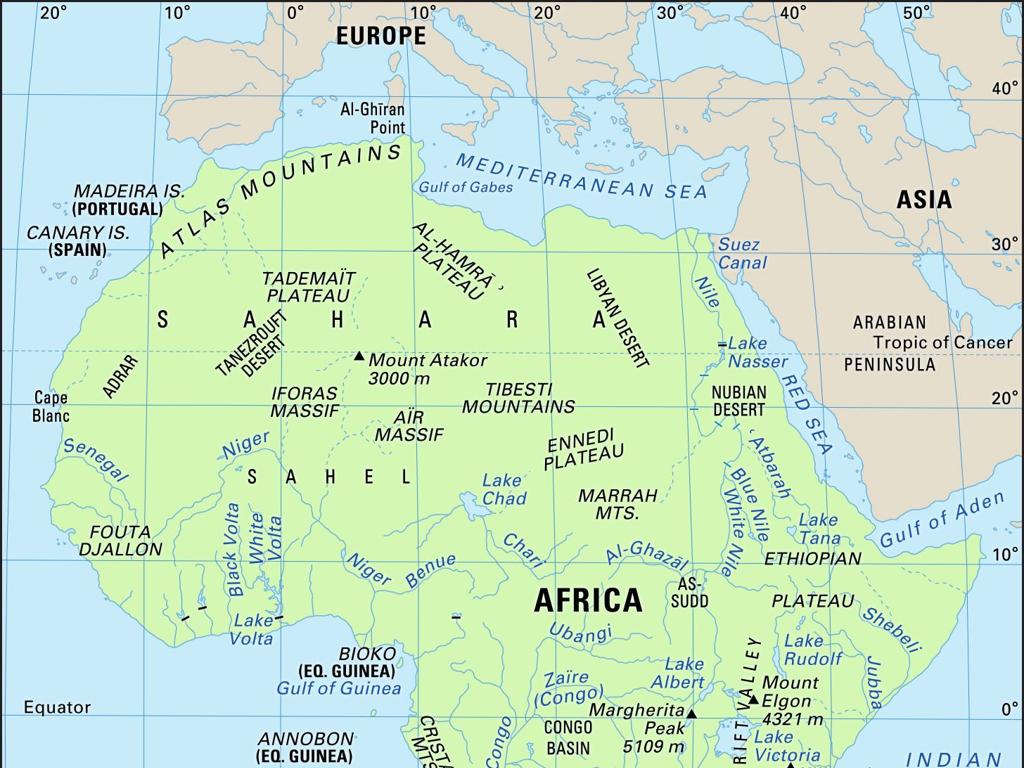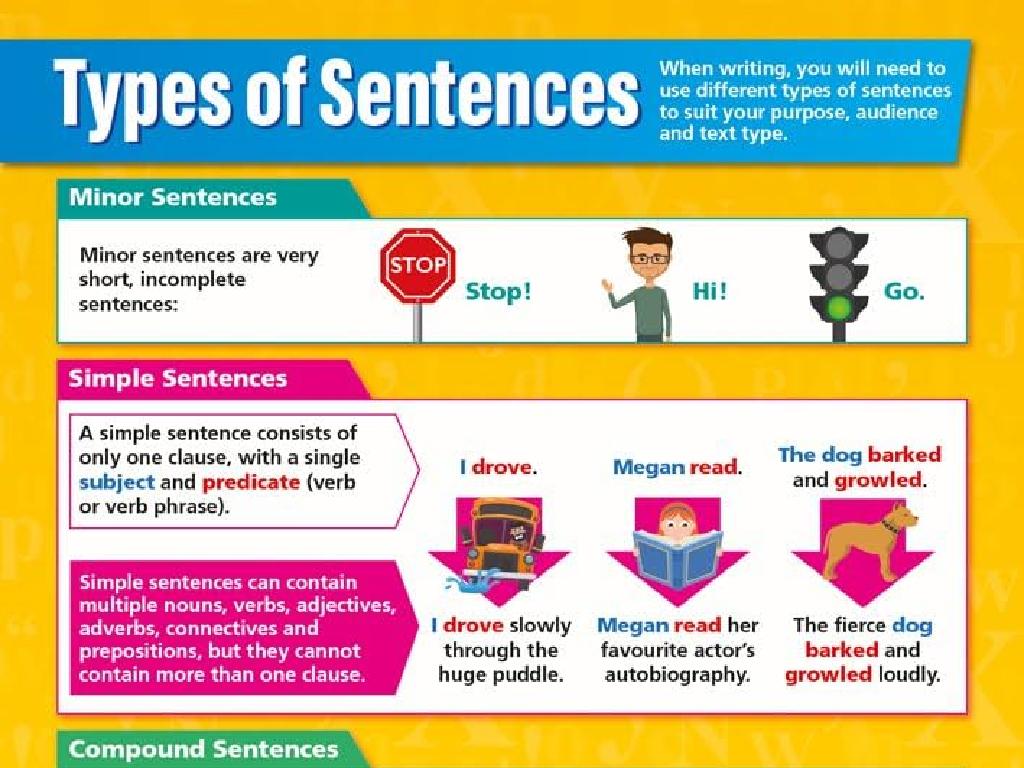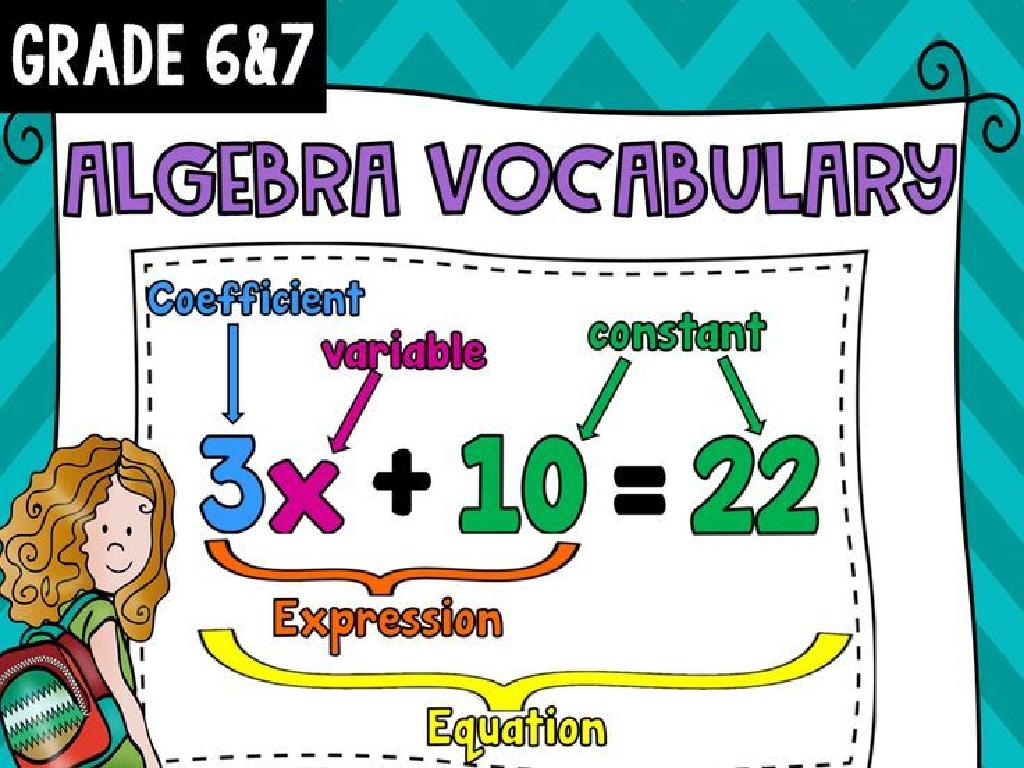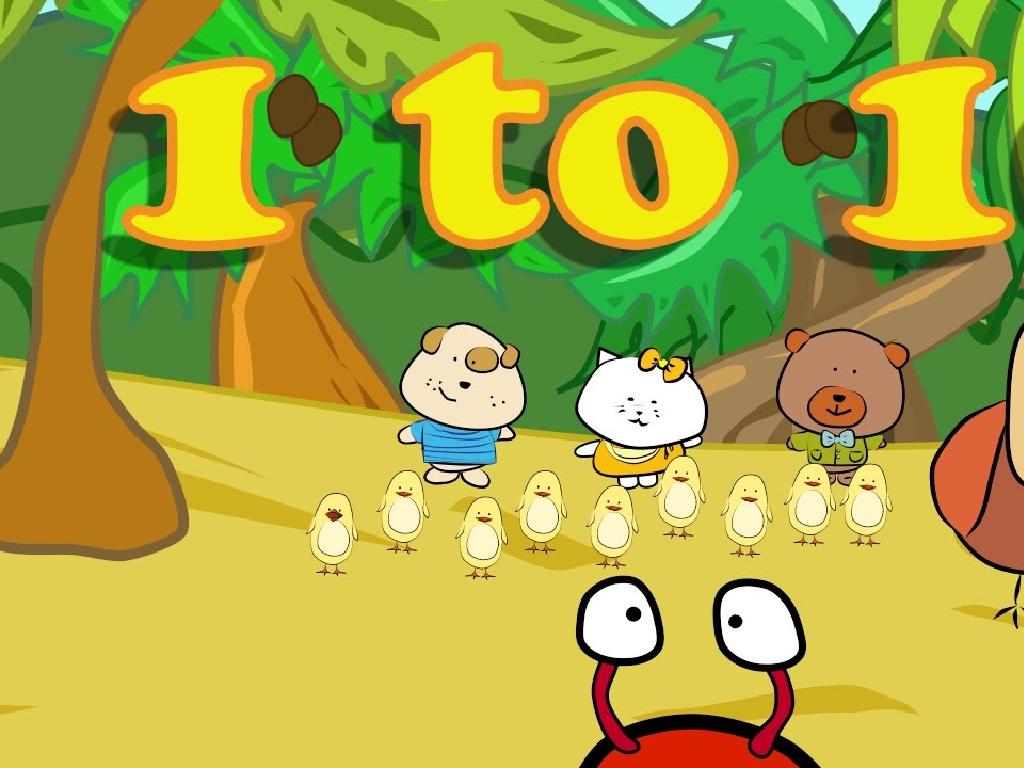Order Topics From Broadest To Narrowest
Subject: Language arts
Grade: Sixth grade
Topic: Expository Writing
Please LOG IN to download the presentation. Access is available to registered users only.
View More Content
Expository Writing: Organizing Ideas
– What is Expository Writing?
– Organizing from Broad to Narrow
– Start with a general idea and narrow it down to specific points
– The Importance of Structure
– Good structure makes writing clear and logical
– Class Activity: Topic Funnel
– Create a ‘topic funnel’ with a broad subject at the top, narrowing down to details
|
Begin with an explanation of expository writing, emphasizing its informative nature without opinions. Explain how starting with broad topics and narrowing down to specific details helps in organizing thoughts and writing clearly. Discuss why a logical structure is crucial for readers to understand the information. For the class activity, have students create a ‘topic funnel’ where they write a broad subject at the top and narrow it down to more specific topics, resembling a funnel shape. This visual will help them understand the concept of organizing information from broad to narrow. Provide examples like ‘Animals’ at the top, narrowing down to ‘Mammals’, then ‘Dogs’, and finally ‘Labradors’. Offer guidance and encourage creativity in choosing their subjects.
Exploring Expository Writing
– What is expository writing?
– It’s writing that explains or informs
– Examples of expository texts
– Essays, articles, and textbooks
– Key characteristics
– Clear, concise, and fact-based
– Structuring expository writing
|
Expository writing is a key component of educational materials and is used to convey information clearly and concisely. It’s important for students to recognize examples of expository writing in their textbooks, articles they read, and essays they write. Characteristics of good expository writing include clarity, factual accuracy, and an organized structure that helps the reader understand the main ideas and supporting details. Encourage students to think about how they can apply these characteristics to their own writing. Instruct them to practice by summarizing a topic they are interested in, starting from the broadest concept and narrowing down to specific details.
The Importance of Organization in Writing
– Organization boosts readability
Well-organized writing is easier to follow and understand.
– Structure aids clear communication
A clear structure helps convey the writer’s message effectively.
– Organized vs. disorganized writing
Comparing examples highlights the impact of organization.
– Analyzing writing samples
We’ll examine samples to see organization in action.
|
This slide emphasizes the significance of organization in expository writing. Good organization makes text easier to read and helps the reader follow the writer’s ideas. Clear structure is crucial for effectively communicating the message to the reader. By comparing organized and disorganized writing samples, students can see the practical effects of organization on readability and clarity. In class, we will analyze writing samples to identify organizational strategies and discuss how they contribute to the overall effectiveness of the writing. Encourage students to think about how they organize their own writing and the importance of structure in conveying their thoughts.
Broad to Narrow: Creating Focus in Writing
– Understand the Inverted Pyramid
– A writing structure starting with the most general information and narrowing down to the specifics.
– Begin with a broad idea
– Start with a general topic or idea that you want to write about.
– Narrow down to specifics
– Gradually focus on more specific aspects of the topic as you progress.
– Focus on key details
– Highlight the most important points that support your topic.
|
This slide introduces the concept of structuring expository writing using the Inverted Pyramid model, which is effective in creating focus from broad to narrow topics. Begin by explaining the model, which starts with the widest coverage of the subject and tapers down to the finer points. Encourage students to start with a general idea and then guide them on how to narrow their focus, providing specific examples and details to support their main idea. Emphasize the importance of including key details that are directly related to the topic to maintain a clear and focused piece of writing. This approach helps readers understand the main points quickly and provides a clear path of thought.
Identifying Broad Topics in Expository Writing
– Understanding broad topics
– Broad topics cover a wide range and aren’t specific.
– Examples of broad expository topics
– ‘Technology’s Impact on Society’ or ‘The Importance of Nutrition’
– Group activity: Find broad topics
– Read sample texts and highlight the general themes.
– Discussing findings with the class
|
This slide introduces the concept of broad topics within expository writing, which are essential for students to understand before they can narrow down their focus. Broad topics are wide-ranging and can be broken down into narrower subtopics. Provide examples of broad topics to illustrate how they encompass a wide scope. The group activity involves students working together to identify broad topics in provided sample texts, promoting collaboration and critical thinking. After the activity, students will discuss their findings, allowing them to engage with the material and learn from each other. The teacher should facilitate the discussion, ensuring that each group understands the concept of broad topics.
Narrowing Down Your Topic in Expository Writing
– Techniques to narrow a topic
– Use filters like time, place, or complexity to refine your topic
– Relevance and focus matter
– A narrow, focused topic makes your writing more impactful
– Class exercise: Topic focus
– We’ll practice trimming a broad topic to a specific angle together
|
This slide introduces students to the concept of focusing a broad topic into a more specific one, which is a crucial skill in expository writing. Start by discussing various techniques to narrow down a topic, such as limiting the scope by time period, geographic location, or by zooming into a particular aspect of the topic. Emphasize the importance of relevance and maintaining a clear focus to make their writing more effective and easier for the reader to follow. The class exercise will involve taking a broad subject and, as a group, applying these techniques to narrow it down. This will give students a practical understanding of the process and prepare them for independent writing. Possible activities include working in small groups to narrow down assigned topics, sharing ideas, and discussing the rationale behind their choices.
Practicing Focus: From Broad to Narrow Topics
– Start with a broad subject
– Narrow it down step by step
– Think of ‘Animals’ then narrow to ‘Marine Life’ then even narrower to ‘Coral Reefs’
– Share your focused topic
– Reflect on the narrowing process
– Was it difficult to choose? What made it challenging?
|
This slide is for an individual activity aimed at teaching students how to focus a broad topic into a narrow, more specific one. Students should start with a broad subject and narrow it down by considering various subtopics until they have a focused topic for expository writing. Encourage them to think critically about their choices and the reasoning behind each step of narrowing down. After they have their narrowed topic, they will share it with the class and discuss the process they went through, including any challenges faced. This will help them understand the importance of specificity in writing and how to approach a broad subject systematically. Possible activities: 1) Students can write down their process in a journal. 2) Create a mind map of their narrowing down process. 3) Pair up and explain their process to a partner. 4) Create a class bulletin board with all the narrowed topics.
Class Activity: Organizing Ideas in Expository Writing
– Create an essay outline
– Begin with a broad subject
– Start with a general topic and gradually focus on specific aspects
– Narrow down your points
– Detail your main points under the broad subject
– Engage in peer review
– Swap outlines with a classmate and discuss each other’s ideas
|
This activity is designed to help students understand the structure of expository writing by creating an outline that organizes ideas from the broadest concept to more specific points. Students should start with a general topic and then add subtopics and details, creating a hierarchy of ideas. After completing their outlines, they will exchange them with a peer for review. The peer review process encourages collaborative learning and critical thinking as students provide constructive feedback to one another. Teachers should circulate the room to assist with the outline creation and to guide the peer review process. Possible activities for different students could include outlining essays on different subjects, using various methods of narrowing down topics, or focusing on different aspects of the peer review process.
Wrapping Up: From Broad to Narrow
– Recap today’s expository writing
– Understand idea organization
– Organizing ideas from general to specific helps clarify writing
– Homework: Craft an essay
– Write a short essay on a topic of your choice
– Use broad to narrow approach
– Apply today’s lesson in your essay structure
|
As we conclude today’s lesson on expository writing, it’s important to remind students of the key takeaways. Emphasize the significance of structuring their ideas from the broadest concept to the narrowest detail, which helps in creating a clear and focused essay. For homework, students are tasked to write a short expository essay on a topic they are interested in. They should apply the concept of organizing their ideas from broad to narrow, as discussed in class. This exercise will reinforce their understanding and provide practical writing experience. Encourage them to choose a topic they are passionate about to make the assignment more engaging. Provide examples of broad topics narrowing down to specific aspects to guide them.





